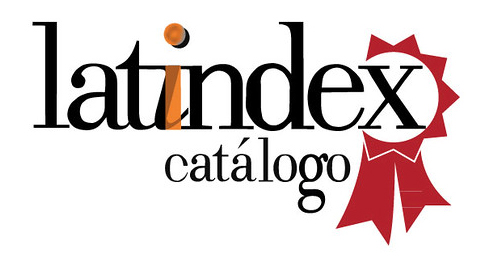Rethinking Solar Geometry and Design Education in the Tropics: Limitations and Opportunities of Current Teaching Methods
DOI:
https://doi.org/10.20868/abe.2024.3.5410Keywords:
Solar geometry; daylight quality; educational resources; learning process; tropical climate, Solar geometry, daylight quality, educational resources, learning process, tropical climateAbstract
Traditional architecture teaching methods pose limitations in attaining a deep understanding of solar geometry and its impact on daylight design, especially in the Tropics. In the context of climate change, advancing teaching methods is imperative to enhance students' comprehension of buildings’ solar performance. While methods for daylighting analysis are well established, teaching methods for solar geometry have lacked attention. This study investigated common teaching tools and methods affecting students' learning. We conducted a survey comparing students’ knowledge in solar geometry and lighting design at two architecture schools in Costa Rica and Malaysia (n=153). Our findings show that students in both countries have low self-assessed knowledge of solar geometry, a preference for a combination of manual and digital learning tools, and a strong consensus on the importance of solar geometry knowledge for their educational and professional development, highlighting a need for improved teaching methods and tools tailored to tropical climates
Downloads
References
[1] Klepeis, N., Nelson, W., Ott, W., Robinson, J., Tsang, A., Switzer, P., Behar, J., Hern, S., Engelmann, W. (2001). The National Human Activity Pattern Survey (NHAPS): A Resource for Assessing Exposure to Environmental Pollutants. Journal of Exposure Science & Environmental Epidemiology, vol. 11(3), pp. 231–252. https://doi.org/10.1038/sj.jea.7500165
[2] Reinhart, C. F. (2014). Daylighting and Sustainable Design. En R. Stein (ed.), Daylighting Handbook I: Fundamentals and Designing with the Sun (p. 9). Cambridge.
[3] Ayoub, M. (2019). 100 Years of Daylighting: A Chronological Review of Daylight Prediction and Calculation Methods. Solar Energy, vol. 194, pp. 360–390. https://doi.org/10.1016/j.solener.2019.10.072
[4] Scarazzato, P., Fonseca Matos, J., Limongi França, A., Pavani, T. (2022). Challenges in Lighting Education: A Recommended Practice. The 8th International Light Symposium: Re-thinking Lighting Design in a Sustainable Future, Copenhagen, Denmark. IOP Conference Series: Earth and Environmental Science, vol. 1099 https://doi.org/10.1088/1755-1315/1099/1/012040
[5] Koenigsberger, O. H., Romero, E. (1977). Viviendas y edificios en zonas cálidas y tropicales. Madrid.
[6] Al-Masrani, S. M., Al-Obaidi, K. M., Zalin, N. A., Isma, M. I. A. (2018). Design Optimisation of Solar Shading Systems for Tropical Office Buildings: Challenges and Future Trends. Solar Energy, vol. 170, pp. 849–872. DOI: https://doi.org/10.1016/j.solener.2018.04.047
[7] Masson-Delmotte, V., Zhai, P., Pirani, A., Connors, S., Péan, C., Chen, Y., Goldfarb, L., Gomis, M., Matthews, J. B. R., Berger, S., Huang, M., Yelekçi, O., Yu, R., Zhou, B., Lonnoy, E., Maycock, T., Waterfield, T., Leitzell, K., Caud, N. (2023). Intergovernmental Panel on Climate Change (IPCC), Climate Change 2021 – The Physical Science Basis: Working Group I Contribution to the Sixth Assessment Report of the Intergovernmental Panel on Climate Change. Cambridge University Press, pp. 3–14.
[8] Szokolay, S. V. (2004). Architecture, Science and Technology. The 38th International Conference of Architectural Science Association ANZAScA “Contexts of Architecture”. Launceston, Tasmania.
[9] Giuliani, F., Khanie, M., Sokół, N., Gentile, N. (2020). Discussing Daylight Simulations in a Proposal for Online Daylighting Education. En BuildSim Nordic 2020 – International Conference Organized by IBPSA-Nordic, 13th-14th October, Oslo: Book of Abstracts (pp. 86–93). Oslo Metropolitan University (OsloMet).
[10] Treacy, G. (2019). Out of “Touch”? − An Experiential Pedagogical Approach to Daylighting in Architecture and Interior Design Education. SHS Web of Conferences, vol. 64, art. 02010. https://doi.org/10.1051/shsconf/20196402010
[11] Giuliani, F., Sokol, N., Lo Verso, V., Viula, R., Caffaro, F., Paule, B., Diakite, A., Sutter, Y. (2019). A Study About Daylighting Knowledge and Education in Europe. Results from the First Phase of the DAYKE Project. Architectural Science Review.
[12] Grønlund, L. (2022). The Appearances of Daylight – An Educational Method for Studying Daylight. IOP Conference Series: Earth and Environmental Science, vol. 1099(1), art. 012021. https://doi.org/10.1088/1755-1315/1099/1/012021
[13] Lo Verso, V., Giuliani, F., Caffaro, F., Basile, F., Peron, F., Mora, T., Bellia, L., Fragliasso, F., Beccali, M., Bonomolo, M., Nocera, F., Costanzo, V. (2021). A Survey on Daylighting Education in Italian Universities: Knowledge of Standards, Metrics, and Simulation Tools. Journal of Daylighting, vol. 8(1), pp. 36–49. https://doi.org/10.15627/jd.2021.3
Downloads
Published
Issue
Section
License
Copyright (c) 2025 Autor / BY-NC-ND

This work is licensed under a Creative Commons Attribution-NonCommercial-NoDerivatives 4.0 International License.
ABE (Advances in Building Education / Innovación Educativa en Edificación) does not charge authors for processing or publishing an article and provides immediate Open Access to its content. All content is available free of charge to the user or his institution. Users are permitted to read, download, copy, distribute, print, search or link to the full text of articles, or use them for any other lawful purpose, without prior permission from the publisher or author. This is in accordance with the BOAI definition of open access.
- Authors retain the copyright and grant to the journal the right to a Creative Commons attribution / Non-Commercial / Non-Derivative 4.0 International (CC BY NC ND) License that allows others to share the work with an acknowledgement of authorship and non-commercial use.
- Authors may separately establish additional agreements for the non-exclusive distribution of the version of the work published in the journal (for example, placing it in an institutional repository or publishing it in a book).
Unless otherwise indicated, all contents of the electronic edition are distributed under a Creative Commons license.














